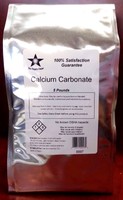About
All feedback (217)
- inkproducts9 (409)- Feedback left by buyer.More than a year agoVerified purchaseThank you for an easy, pleasant transaction. Excellent buyer. A++++++.
- toyarcade (66095)- Feedback left by buyer.Past 6 monthsVerified purchaseThank you for an easy, pleasant transaction. Excellent buyer. A++++++.
- halo-dreamhouse (7766)- Feedback left by buyer.More than a year agoVerified purchaseHope to deal with you again. Thank you.
- footballkeeboo (1245)- Feedback left by buyer.Past 6 monthsVerified purchaseExcellent Buyer and transaction! Thank you for your prompt payment and for your purchase. It is greatly appreciated.
- serjoh-43 (239)- Feedback left by buyer.Past yearVerified purchaseThank you for an easy, pleasant transaction. Excellent buyer. A++++++.
- gruv-entertainment (436674)- Feedback left by buyer.Past yearVerified purchaseQuick response and fast payment. Perfect! THANKS!!
Reviews (3)

Jun 05, 2016
Great for papermaking
This is in my opinion the perfect pH buffer chemical for making permanent and archival paper. The ISO requirement is of at least 2% dry weight of such buffer, calcium carbonate being used by many. Food grade is plenty good, no need to pay for chem lab grade. The product delivered is finely ground, packed in a strong, resealable clasp bag, ideal for this use and for keeping around the workshop to use as needed.
It was shipped together with the Material Data Sheet (MDS) indicating that its origin is limestone. While some papermakers might prefer oyster shell for their calcium carbonate, vegan consumers do not want anything from an animal origin, so this product is better in that sense.

Mar 07, 2019
good, hard metal
This is very good quality metal. HARD. That means a little bit of a challenge for cutting, well worth it because the result is durable and strong.
I use this kind of rod for a lot of prototyping, easy to adjust things in place, sturdy enough to go into machines used in production.

Nov 09, 2018
Texas Bluebonnet blue!
I make paper by hand.
For an art project inspired on Texas wildflowers, where bluebonnets of course are the main dish (it's our State Flower), I needed some really good blue.
I was concerned a bit, I am very, very eco, blues are usually cobalt or copper compounds, which are toxic, so I did research, and found out that ultramarine is as "safe" as a pigment can be (still, use respiratory protection, as with any finely ground powder, don't eat it, etc.), because it's essentially a man-made semi-precious stone, ground into a fine powder. (read the wikipedia article on ultramarine)
I am very happy with this product, it performs great, and ultramarine is also very lightfast - this blue will not fade, essentially bright forever (which also is a problem with other "traditional" blue pigments).
Pictures are of my first draft of bluebonnets done with pigmented pulp. For the "guacamole green", I mixed one part of this ultramarine with two parts yellow iron oxide. Different hues, as in the sampler, are different concentrations with pulp, as measured dry. Darkest is one part weight ultramarine (or mix) for three parts dry pulp. then 1/9, 1/27, 1/81, and lightest I used was 1/243, and for the "painting" (no inks or paints were used, this was made with only pigmented paper pulp, 100% cotton) I also used some plain pulp with no pigment, showing up as white, for the clouds.
For pigmenting paper pulp you also need retention aid, but that's another story...
